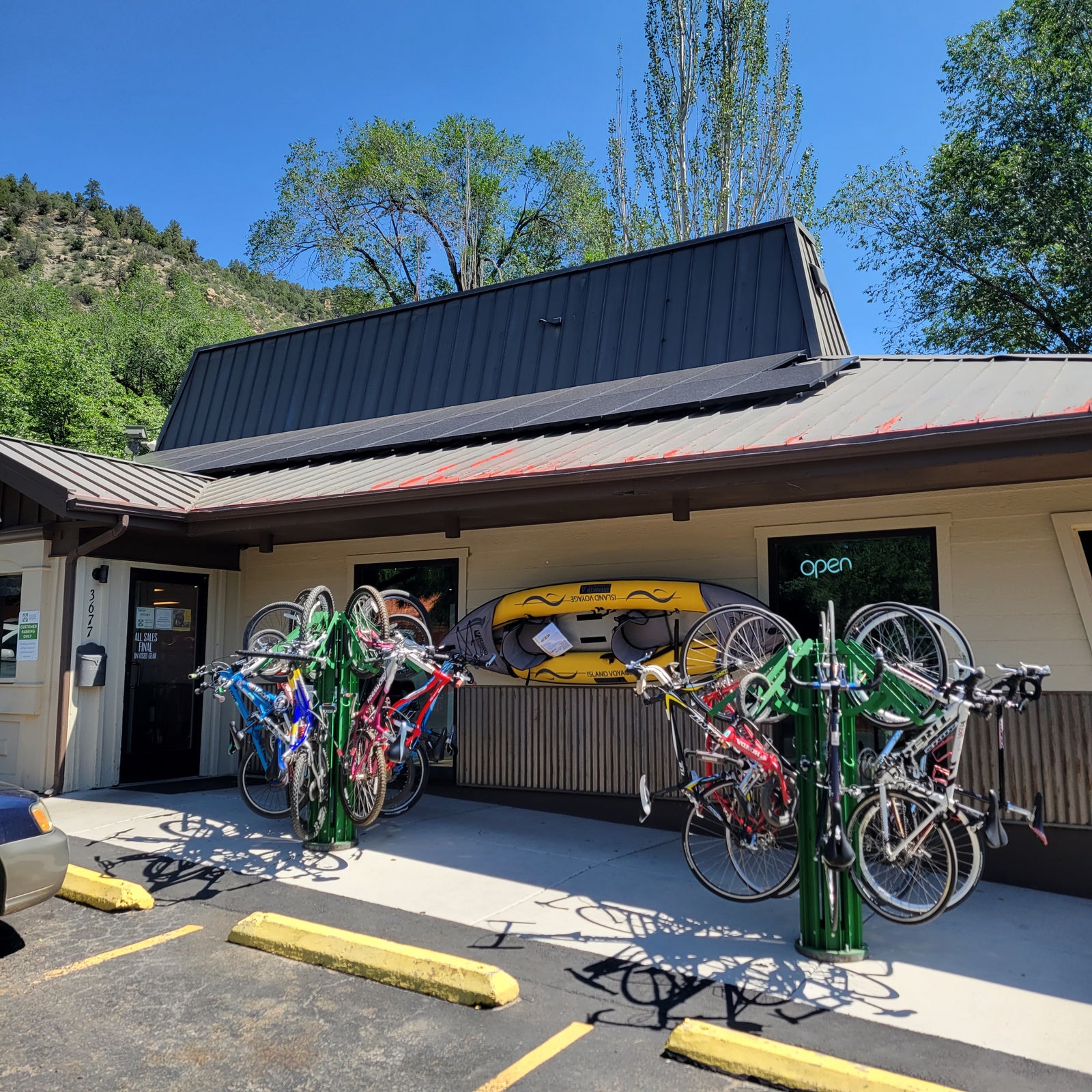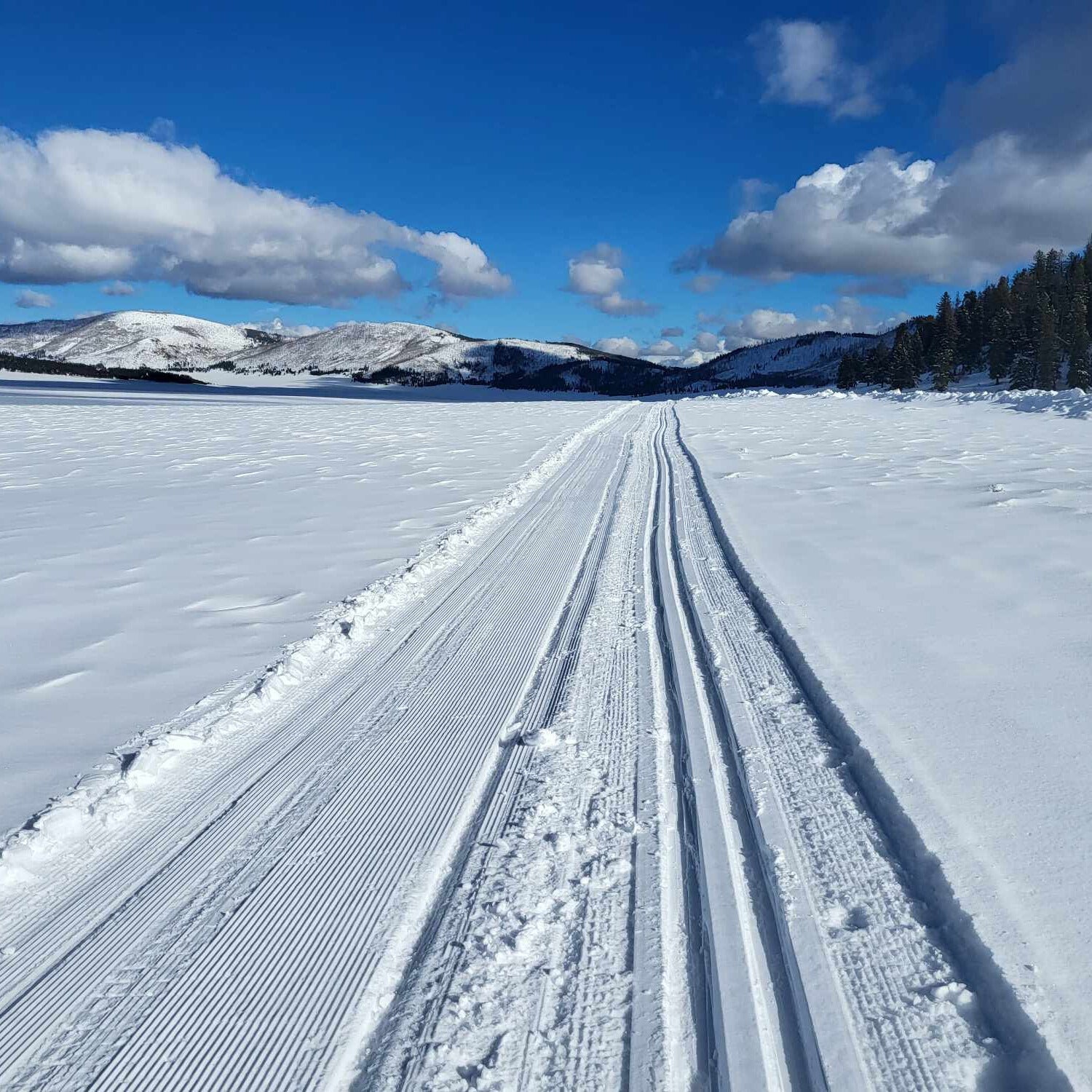Your Cart is Empty
accepting gear drop offs Mon-Sat 10am-5pm. No Consignment acceptance on Sundays.
accepting gear drop offs Mon-Sat 10am-5pm. No Consignment acceptance on Sundays.

An Outdoor Industry Perspective on Making Impact: 5 Steps to Becoming a Real Sustainable Business
Obviously with a name like Durango Outdoor Exchange, we love the great outdoors. Every time we bring our paddle boards (SUPs) out to the Animas River with our kids or hike the Colorado high country to escape the summer heat and be wowed by the explosion of flowers in bloom, we recommit to saving our home and planet for future generations.
Essentially this is thedefinition of sustainability: to take only what we need, save some for others today and still more for our children and grandchildren for tomorrow. Of course, there are other academic words used to describe sustainability, but this is the version we like and it’s what guides our business model every day in the outdoor retail industry.
Some would say Durango Outdoor Exchange is already a sustainable business because we sellusedoutdoor gear, but we know better, so we dug deeper into our values and made some key decisions we think are worth sharing. Hopefully, what has worked for us just might benefit not only the outdoor industry but all business sectors.
Here’s what we recommend if you’re serious about greening your business, and why we do what we do:
Step 1: Renovation vs. Build: Why We Remodeled a Pizza Hut in Durango
As humans we love the shinny new thing; it must be part of our evolution, finding the bright ripe fruit to nourish us. But, today, the brand new comes with a lot of baggage like chemicals, CO2, and waste—so much waste. So, we went on the hunt instead to find a diamond in the rough: an existing commercial building in the heart of Durango. We looked high and low for a place to shine. Never did we set out to land the Durango Outdoor Exchange inside a 70’s style former Pizza Hut, but that’s now the best part. Who doesn’t love pizza? Plus, its’s easy for tourists to find and locals get a good chuckle out of it. Besides, it has character and feels real. Above all it’s ours, and it’s located at the gateway to the San Juan Colorado Rocky Mountains.
We thought about building new and making a statement, but luckily finances and our values took us in the direction of renovating an existing building. In doing our research, we stumbled. Across a study called “The Greenest Building: Quantifying the Environmental Value of Building Reuse,” (written by the Seattle based sustainability think tankPreservation Green Lab) and learned that:
“When it comes to climate impacts, new buildings take 10-80 years to catch up to old buildings that have energy-saving retrofits.”
In Portland, Ore., alone, the study estimates that “if the city were to retrofit the single-family homes and office buildings that are otherwise likely to demolish over the next decade, could save roughly 231,000 metric tons of carbon dioxide, which is about 15% of the country’s CO2 reduction target for the next decade.”
Step 2: Energy Independence: Why Going Solar Made Common Sense and Cents
Our decision to install roof solar panels was driven by our commitment to the environment, and with more research we learned that homes and commercial buildings with solar also sell faster and for more money.
In fact, solar energy is one of the best commercial "remodel" investments you can make. For every $1,000 saved in utility bills per year, approximately $20,000 is added to a building’s value.
Plus, the upfront costs are offset by the federal government offers a26% tax credit to businesses, which greatly reduces the cost, and improves the return of a solar power investment.
Overall, sour 24 solar panels are on track to help us improve our profitability (through energy costs savings over time). So far,the panels are producing almost enough to fully cover our electric bill on an annual basis. They are south facing and really make the most of our sunny Colorado days!
As local Durango business owners in the used outdoor retail space, we’re finding that what’s good for people and the environment is also good for our business’ bottom line.
If solar is just not in the cards for your business now, we suggest looking into carbon offsets equal to or greater than the energy your business uses for its operations, production, and more.Essentially, a carbon offset refers to a credit bought by an individual or entity to compensate for its carbon emissions or footprint. One carbon offset generally represents one ton of CO2 reduced or removed.
Locally, we recommend offsetting your business’s carbon footprint with4CORE. Their offset program invests in our local community benefiting low-income home owners and renters with energy efficiency installations—a win/win/win for business, air, and our neighbors in need.
Step 3: Electrification of transportation: Why we installed anelectrical vehicle charging station in our parking lot.
The more charging stations in every community, the more electrical vehicles will be purchased. Increased adoption of EVs further reduces climate change causing greenhouse gases, which is a powerful motivator for us.
Again, the financial side of the decision-making equation also proved out. We acquired just under half of the project cost via theCharge Ahead Colorado grant funding source. We went with the level 2.5 station which is a single station with dual charging ports. It offers a faster charge than many and will fully charge a car within an hour.

What’s also exciting is the additional marketing exposure we’ll get by being added to local and state charging station maps online and in print. Being a location for a faster charge should bring in like-minded new customers to our store; we’re now a shop to visit while their car charges. How cool is that? Time will tell on this point, as we’re installing the charging station this month (July 2022).
Step 4 | Going Zero Waste: Why we encourage customers to b.y.o.
We’re in the camping, skiing, and backpacking outdoor business. We sell darn hard to break and mighty lite cutlery, plates, bows, and more for the outdoor enthusiast to bring on their trips. What if we as a society take the lead from the outdoor community and b.y.o when you go out anywhere to grab food on the go? What if we all brought our own to-go containers, cups, and utensils for take-out? It’s a new mindset. Like any shift in perspective, it takes time to become a habit.
This idea is not our own. The Durango Outdoor Exchange is excited to support the globalbring your own movement and especially our localBring It! Durango Campaign with information on display and stickers to promote b.y.o. in our store.
Bring It! Durango started by local organic ice cream shop,Cream Bean Berry with marketing and sustainability strategy support fromLive Creative Studio. Bring It! Is in its early stages and intends to inspire all restaurants and events to promote the campaign to customers and/or to offer b.y.o. kits created by local sustainable business,Sew Alpine (who designed/sewed the utensil covers),WeFIll who sourced upcycled metal (made from recycled razor blades) utensils and straws, andHunu Cups, a collapsible cup that fits in your pocket.
Step 5 | Support Your Local Sustainable Biz Community: Why we became a member of Live Creative Studio’s Durango Sustainable Business Guide
Join or create your own Sustainable Business Networking Group to support each other and inspire other businesses to start on the sustainability path. Our localDurango Sustainable Business Guide, for example, features over 40 businesses and entrepreneurs. We meet. Monthly to share a drink, what’s working, where we need help. We have found that not only does this group serve as support for. The. Challenges we face, but also helps us think more collaboratively to lift each other up through co-marketing.
Like making it to the top of a 14teener, sustainable business practice takes commitment, strength, and passion. Best to you on your sustainability journey.

Work crews were busy over the off season making changes to ski areas across the region. While the hoped-for new lifts at Purgatory aren’t going to spin, there are plenty of reasons for you toget some wax (or new skis) from Durango Outdoor Exchange and hit the slopes this winter.

Thanksgiving is almost here–and skiing this early is always a gamble. Here are some non-skiing warm(er) weather destination ideas for the long break.

Just a couple hours from Durango, Valles Caldera is a great cross-country skiing destination, with surprisingly good snow and very few visitors.
Valles Caldera National Preserve is a popular hiking destination in the summer and a surprisingly great skiing destination in the winter.